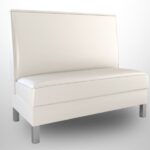Choosing the right property type—new, old, or green—can significantly impact your mortgage options. Each property type comes with its unique set of financial implications, influencing everything from interest rates to loan terms. Understanding these connections can help you make informed decisions that align with your financial goals and long-term plans. This article will explore how the type of property you choose affects the mortgage options available to you, providing insights into the benefits and challenges associated with new, old, and green properties.
What Are the Main Types of Properties?
When you’re looking to buy a home, you’ll generally come across three main types of properties: new, old, and green.
New properties are those freshly built, often featuring the latest in construction technology and modern amenities. These homes are typically move-in ready and comply with current building codes and energy efficiency standards. They often come with warranties for construction and appliances, providing peace of mind for new owners.
Old properties are existing homes that have been around for a while. They might have a unique charm and character that new homes lack. However, they may also require more maintenance and updates to meet modern living standards. These homes can be found in established neighborhoods with mature landscaping and a sense of community.
Green properties are designed with sustainability in mind. These homes incorporate energy-efficient features like solar panels, high-efficiency windows, and advanced insulation. They aim to reduce the environmental impact and lower utility costs over time. Green properties can be either new constructions or older homes that have been retrofitted with eco-friendly upgrades.
Understanding these main types of properties can help you determine which one aligns best with your lifestyle and financial goals. Each type comes with its own set of benefits and challenges, influencing not only your living experience but also the mortgage options available to you.
How Does a New Property Influence Mortgage Choices?
When you decide to buy a new property, the mortgage options available to you can be quite different from those for older homes. New properties often come with modern amenities and energy-efficient features, which can qualify you for special mortgage programs. These programs might offer lower interest rates or reduced fees, making them attractive options.
One significant aspect is the availability of preferred lenders. Developers of new constructions sometimes have partnerships with specific lenders who are familiar with the project and can offer favorable terms. This can streamline the approval process and potentially save you money on interest rates and closing costs.
However, new properties may come with higher upfront costs. You might face substantial down payments and closing costs, especially if the development is still under construction. This can impact your mortgage choices, as you’ll need to ensure you have sufficient funds to cover these expenses.
Additionally, interest rates for new developments can vary. If you’re seeking financing before a certain percentage of units are sold, you might encounter higher rates due to the perceived risk. It’s crucial to weigh these factors and consider how the modern features and potential incentives of a new property align with your financial situation.
What Are the Mortgage Options for Older Properties?
When you’re looking at older properties, your mortgage options can differ significantly from those available for new builds. Older homes often come with their own unique set of challenges and opportunities that can influence your financing decisions.
One of the primary considerations is the potential need for renovations. Older homes may require updates to meet modern standards or personal preferences. In these cases, renovation loans, such as the FHA 203(k) loan, can be a good fit. This type of loan allows you to borrow money for both the purchase of the home and the cost of renovations, all under a single mortgage.
Traditional mortgages are also available for older properties, but they might come with higher interest rates. Lenders often view older homes as higher risk due to potential maintenance issues. Therefore, it’s crucial to have a thorough inspection done to understand the property’s condition and negotiate the price accordingly.
Another option to consider is a home equity line of credit (HELOC), especially if the property has significant equity. This can provide a flexible financing solution for ongoing or future renovation projects.
In summary, while older properties might offer more charm and character, they require careful consideration of mortgage options to ensure you’re financially prepared for any needed repairs or upgrades.
What Are Green Mortgages and Their Benefits?
Green mortgages are a relatively new type of financing that encourage energy efficiency and sustainable building practices. These mortgages are specifically designed for properties that meet certain environmental standards, often requiring features like energy-efficient windows, insulation, and appliances. By opting for a green mortgage, you can benefit from a range of financial incentives that make it easier to invest in eco-friendly homes.
One of the main advantages of green mortgages is the potential for lower interest rates. Lenders recognize that energy-efficient homes typically have lower operating costs, which reduces financial risk. This can translate into more favorable loan terms for you, making green mortgages an attractive option if you’re considering a new property with modern, sustainable features. Additionally, some green mortgage programs offer reduced fees or even cashback incentives to further sweeten the deal.
Another significant benefit is the potential for long-term savings on utility bills. Homes that qualify for green mortgages are often equipped with the latest energy-saving technologies, which can drastically cut down on your electricity, water, and heating costs. Over time, these savings can add up, helping to offset the initial investment in the property. This makes green mortgages not only a smart environmental choice but also a financially savvy one.
It’s also worth noting that green mortgages can increase the resale value of your home. As more buyers become environmentally conscious, properties with energy-efficient features are in higher demand. This can make your home more attractive on the market, potentially leading to a quicker sale and a better return on your investment.
Green mortgages are gaining popularity as more people recognize the importance of sustainability in their daily lives. By choosing a property that meets green standards, you not only contribute to a healthier planet but also enjoy the financial perks that come with it. If you’re interested in exploring these options, many lenders now offer specialized programs tailored to energy-efficient homes, making it easier than ever to go green with your next mortgage.
How Do Property Types Influence Financial Strategies?
Choosing between a new, old, or green property can significantly shape your financial strategy. Each type of property comes with its own set of financial implications that you need to consider carefully.
When you opt for a new property, you’re often looking at higher upfront costs but lower maintenance expenses. New homes typically come with modern amenities and energy-efficient features, which can save you money on utility bills over time. These properties might also qualify you for special mortgage programs that offer lower interest rates or other incentives, making them a potentially attractive option for long-term savings.
On the other hand, older properties can offer lower initial purchase prices but might require more investment in repairs and renovations. This means you could be looking at renovation loans or home equity lines of credit to cover these costs. The charm and character of older homes can be appealing, but you must be prepared for the potential financial commitment to maintain or upgrade the property.
Green properties, designed with sustainability in mind, offer unique financial benefits. They often qualify for green mortgages, which can come with lower interest rates and incentives for energy-efficient upgrades. Investing in a green property can align with both your environmental values and financial goals, as these homes can reduce long-term utility costs and potentially increase in value as demand for sustainable living grows.
Ultimately, the type of property you choose will guide your financial strategy, influencing everything from mortgage options to long-term costs and savings.
Summary
In conclusion, the type of property you choose—whether new, old, or green—can significantly impact the mortgage options available to you. New properties often come with modern amenities and energy-efficient features, making them attractive for green mortgages. Older properties might require more maintenance, influencing your need for renovation loans or traditional mortgages. Green properties, with their sustainability focus, offer unique benefits through specialized financing options. Understanding these connections helps you make informed decisions, aligning your financial strategy with your property choice. Always consider how the characteristics of the property will affect your mortgage to ensure a stable and beneficial financial outcome.
Published by: Nelly Chavez

















